Thorny spruce "Glauka globoza": description and cultivation
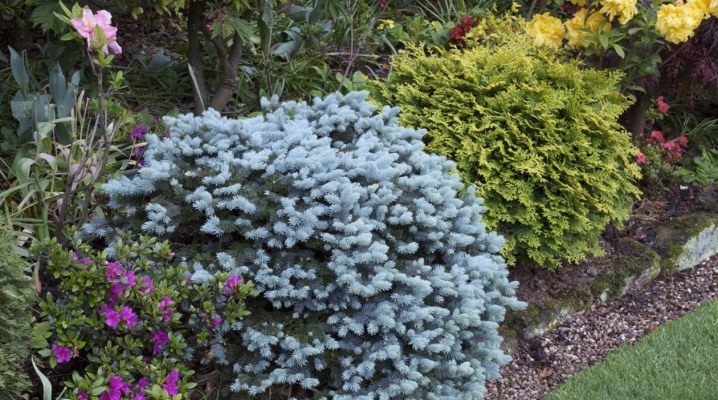
In its natural environment, Glauca spruce grows in the North American states of Colorado and Utah, and in our time this spruce has found wide distribution throughout Europe. For its unpretentiousness, compactness and attractiveness, it has become a favorite of owners of household plots. When landscaping territories, it is often used by landscape designers, planting in park areas or on city streets.
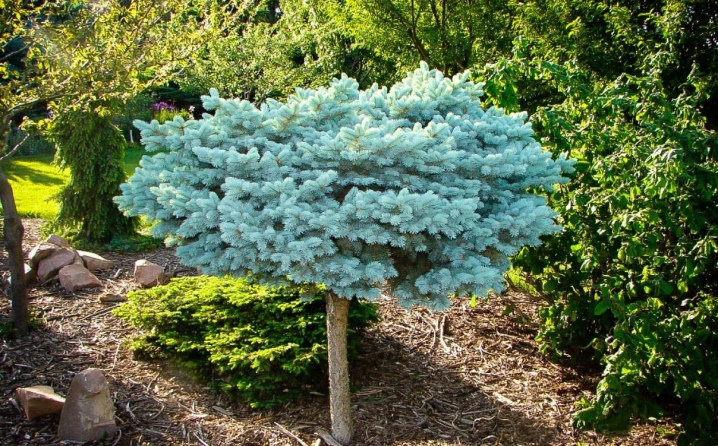
Description
There are two types of spiny Glauka: standard and dwarf. The dwarf variety was bred by breeding in Holland in 1937. For the peculiarity of the color and shape of the crown, the spruce was named Glauka globoza (Glauca globose)... An adult plant Glauca globosa grows no more than 2 m, while it is characterized by a compact size along the radius of the crown. It grows slowly: the spruce grows by a maximum of 10 centimeters per year. The spruce is hundreds of years old, there are even 500-year-old trees. Spruce is resistant to adverse conditions, it is not afraid of frost and air pollution. The crown of a young tree has a regular ball shape, which over the years slightly stretches and turns into a conical one.
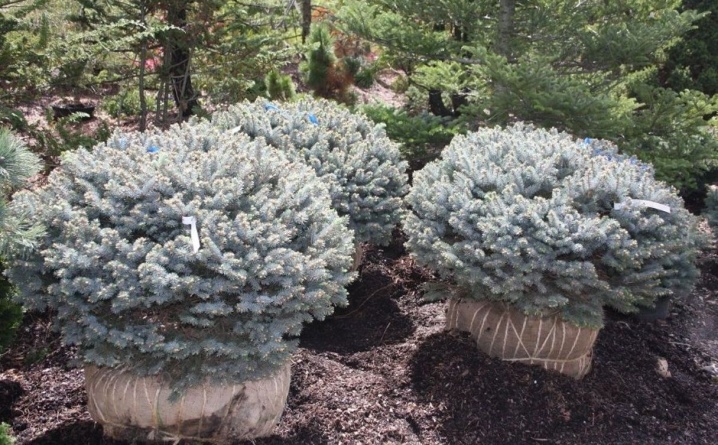
Long, slightly curved spruce needles of a bluish-blue color with a festive and solemn exotic silvery sheen give the plant an invariably fresh look, creating a special aura around this amazingly attractive tree. The pointed needles are about 4 centimeters long. They are so densely located on the branches that they give the impression of fluffiness, rather than thorny spruce legs. The color of the needles is constant, regardless of weather conditions and time. The wax, which covers the needles, carefully protects the plant from adverse environmental influences.
Even very young spruces have fruits - small oval brown cones. The branches are short and very strong, they are arranged in the correct order perpendicular to the trunk.
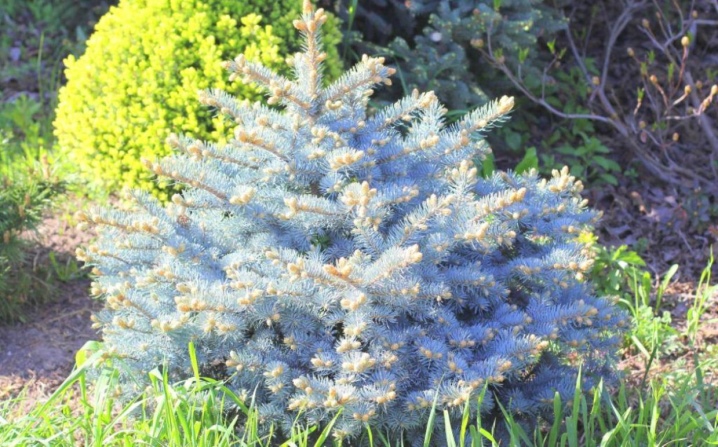
Landing rules
Almost any place is suitable for planting, regardless of the presence of light there. The tree is unpretentious and can grow safely both in the shade and in bright light.
The only condition when choosing a landing site is to study the passage of groundwater. They should not go to the top layers of the soil, where the root system of the plant will be.
If it is problematic to find such a place, then a drainage layer of 20-30 centimeters should be provided to protect the roots.
Any soil is suitable, but sandy loam and loamy low-medium acidity is preferable. A prerequisite: the absence of bogging and limescale. Saplings are planted in spring and early summer, from April to late July. As a rule, four-year-old seedlings are planted in a permanent place of growth. The crown of seedlings grafted on a trunk looks especially beautiful.
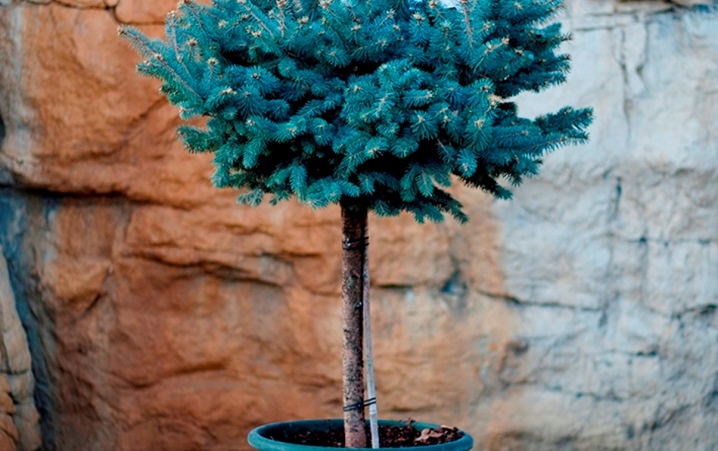
When planting spruce trees in a group, the distance between trees should be from 2 to 3 meters at a planting hole depth of 50 to 70 centimeters.
When planting Glauka globose on a site, you should pay attention to its proximity to other plants. Aspen, boxwood, rose, wild rose, chestnut, maple do not get along with spruce. Fir will become a bad neighbor for a blue spruce. But other conifers will feel great being next to a thorny neighbor. Suitable for growing together with spruce blueberries, sea buckthorn, honeysuckle and rhododendron.
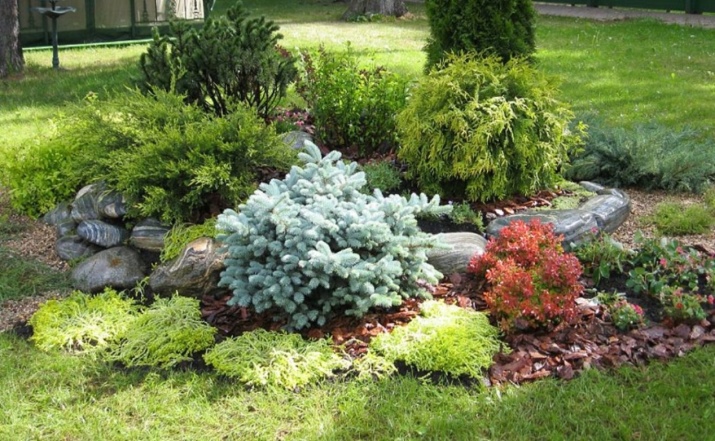
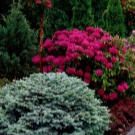
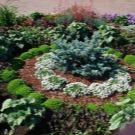
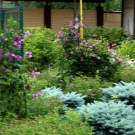

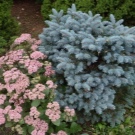
Subtleties of care
With excellent endurance and unpretentiousness, the spruce still needs basic care. With very little effort, you can grow a real beauty.
Watering
In dry weather, the tree should be watered 2 times a week, pouring 2 buckets of water under the plant.
In rainy weather, watering is reduced to a minimum. Evening time is preferable for watering.
The water should be settled for several hours and at room temperature.
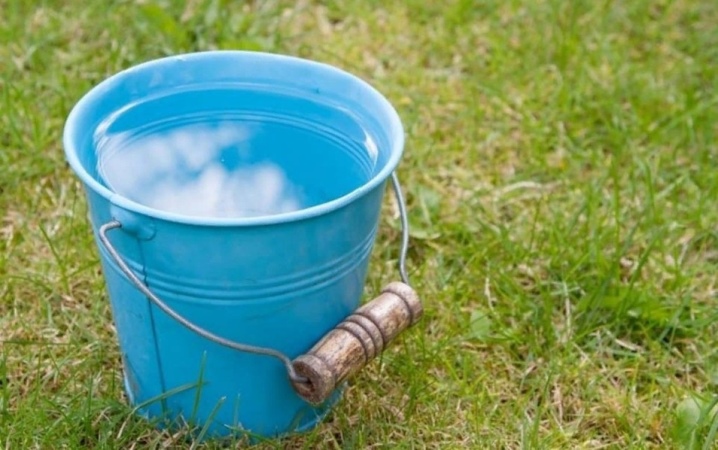
Fertilizer
In spring and autumn, the young tree should be fed with a special fertilizer for conifers. During the first week, watering with a growth stimulator of the root system is recommended, and the branches sprayed with "Epin" or "Zircon". It is enough to feed a mature tree in spring once a year.
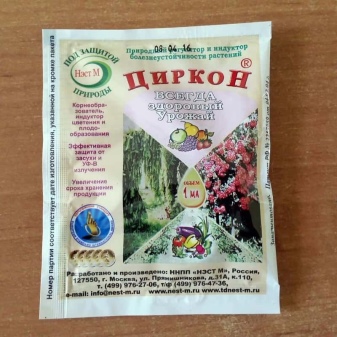

It is contraindicated to use humus, manure and urea as fertilizers.
Loosening and mulching
After watering, the soil around the plant should be carefully loosened, not forgetting that the spruce root system is very close to the soil surface. Before mulching with peat, sawdust or compost, remove weeds around the trunk, which can provoke diseases and attract harmful insects.
When mulching, it is recommended to carefully tie the shoots with ropes, wrapping them with covering material. In the spring, you should carefully remove the shelter, preventing the sharp penetration of sunlight onto the young needles. It could burn her. Initially, you can cover young trees with a sunscreen mesh cloth.
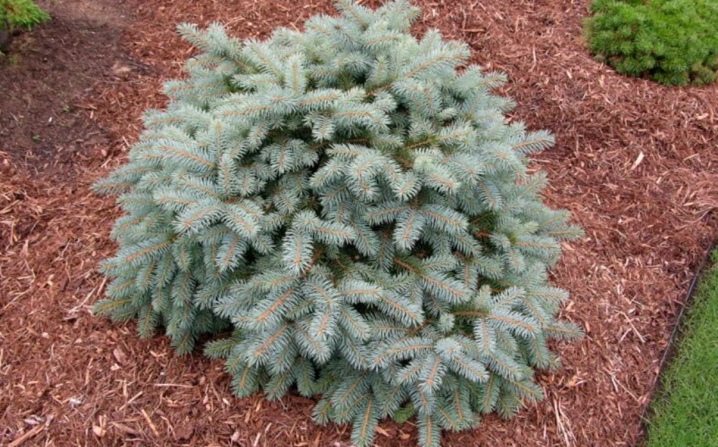
Pruning
In early spring, sanitary pruning of branches broken and damaged by snow cover is carried out. To give the spruce a certain shape, decorative pruning is done no more than once a year.
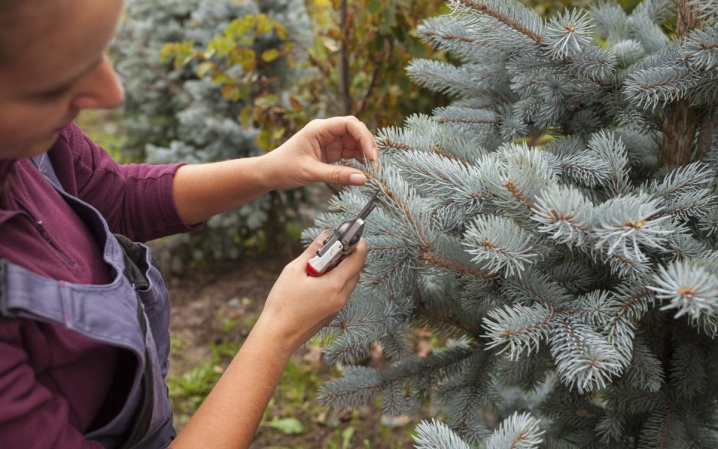
Preparing for winter
An adult tree does not require special care in winter and will be able to withstand 35-degree frost. And the young ate the first 2 years, it is better to cover it in traditional ways.
In winter, all spruce care consists in shaking off the abundant snow cover from the branches.
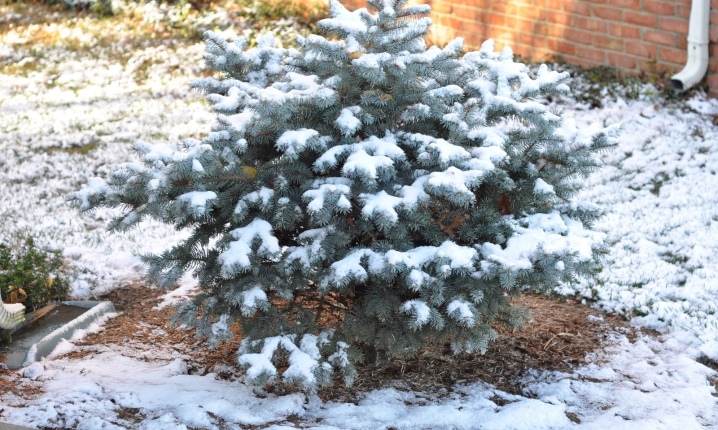
Reproduction methods
Glauka globose propagates by cuttings, grafts or seeds. Each method has its own advantages and disadvantages. In order to properly plant a spruce, certain skills and dexterity are required. When propagating spruce with seeds, you will have to be patient to get the desired result. As a rule, gardeners purchase ready-made seedlings or use the propagation method using cuttings.
Cuttings
Cuttings can be made at any time of the year, except for winter. A young eight-year-old spruce is suitable for grafting. Cutting off cuttings about 10 cm from it, place them in a growth stimulator.
It is kept in it for several hours and then planted at an angle in prepared soil, including a drainage layer, soil substrate (ready-made store or independently prepared from peat, sand and perlite in different parts).
The planted cuttings are covered with foil and placed in a shaded place. The planted cuttings are watered with water at room temperature, as necessary, it is required to loosen the ground around them and pull out weeds. After a year, the cuttings will root thoroughly. After that, they are transplanted into a greenhouse, where they are looked after for another 4 years, after which they are planted in a permanent place of growth.
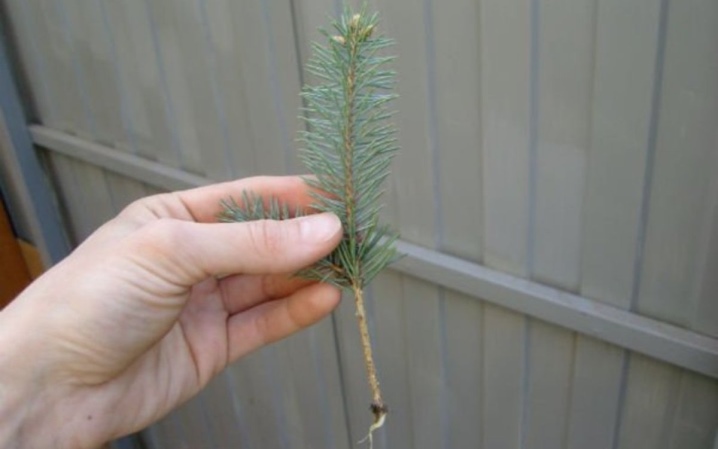
Seeds
To obtain seeds, spruce cones are dried, then the seeds are freed from scales, disinfected in a manganese solution and stratified. In the spring, well-dried seeds are sown, covered with foil or placed in a greenhouse. Planting soil should include peat, conifer fertilizer and fungicide. The landing hole is deepened by 2 centimeters. After the seeds sprout, they are kept in greenhouse conditions for another 4 years, after which they are transplanted into an open place, continuing their care for another 3 years.And only after 7 years, the spruce is transplanted to a permanent place of growth.
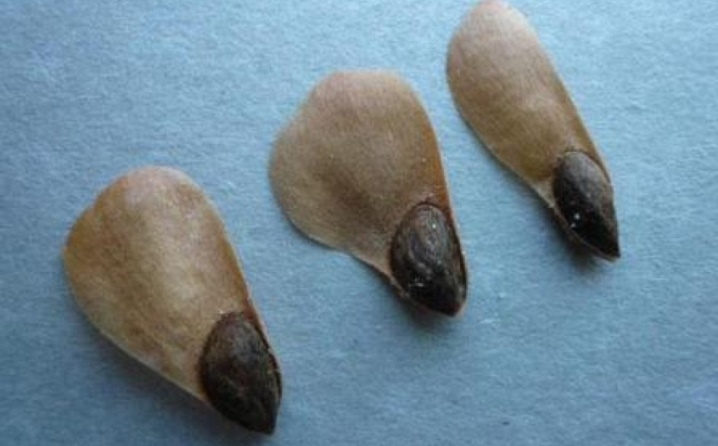
Diseases and pests
If at the end of summer the needles of Glauka globose began to crumble, changing the bluish-silver color to yellow or brown, this indicates fungal disease... It can be cured with systemic fungicides. These drugs will also help with the drying of the tree and the wilting of the upper shoots.
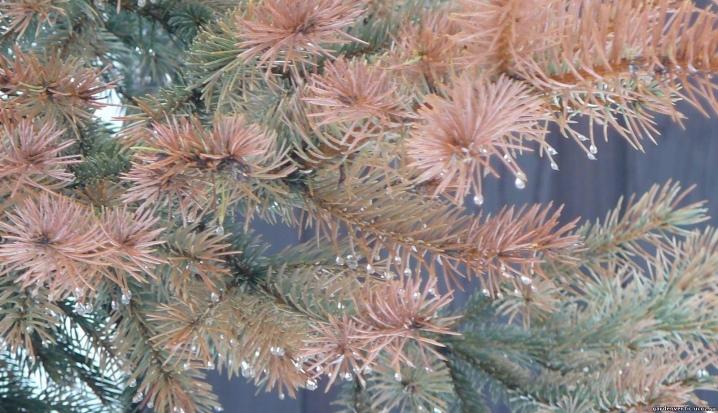
Aphids, spider mites and stem pests can also spoil a beautiful spruce tree. The presence of a spider mite is manifested with the help of a thin cobweb that envelops the needles, and the appearance of characteristic yellow spots on it. Acaricidal complex agents will help in the fight against this pest.
It is very difficult to spot aphids, which usually attack the lower branches of the tree. It can be dealt with by using regular soapy water and trimming the damaged areas. Small bugs-pests spoil the bark, gnawing numerous holes in it, which weakens the tree and can lead to its death. You can fight bugs with insecticides.
Application in landscape design
Most often, spruce is planted along paths or as a hedge. Small trees are also beautiful in single copies as decoration of lawns. Such a cute tree can become the center of a playground as a constant reminder of your favorite New Year's holiday. The compact tree also looks advantageous in composition with other tall coniferous trees.
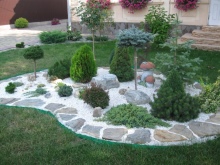
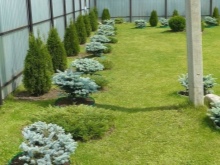
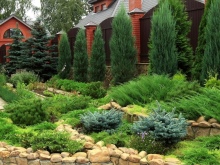
Spruce, growing with blooming lilacs, lilies, anaphalis and forsythia, is surprisingly beautifully combined in color. Compositions combining spruce and fruit bushes (mountain ash, raspberry, gooseberry, sea buckthorn) look interesting, especially naturalistic.
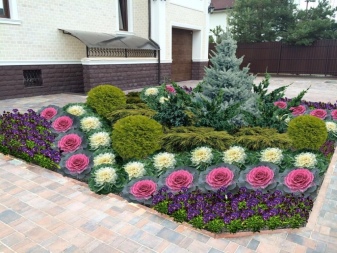
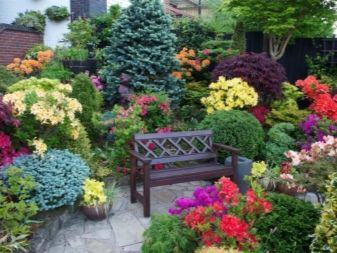
Experienced gardeners use spruce not only as a decorative element, but also as a purifier of the garden area from the exhaust of gas from passing vehicles and car dust. For this purpose, a spruce is planted between the fruit trees in a checkerboard pattern.
Those who do not have a plot of land can be advised to make a spruce oasis by planting a young plant in a pot and placing it on the balcony or on the roof of the house. With the help of trimming, you can slightly change the natural shape, giving it any shape close to spherical or conical.

You will learn more about Glauka Globoza fir trees by watching the following video.



































































The comment was sent successfully.